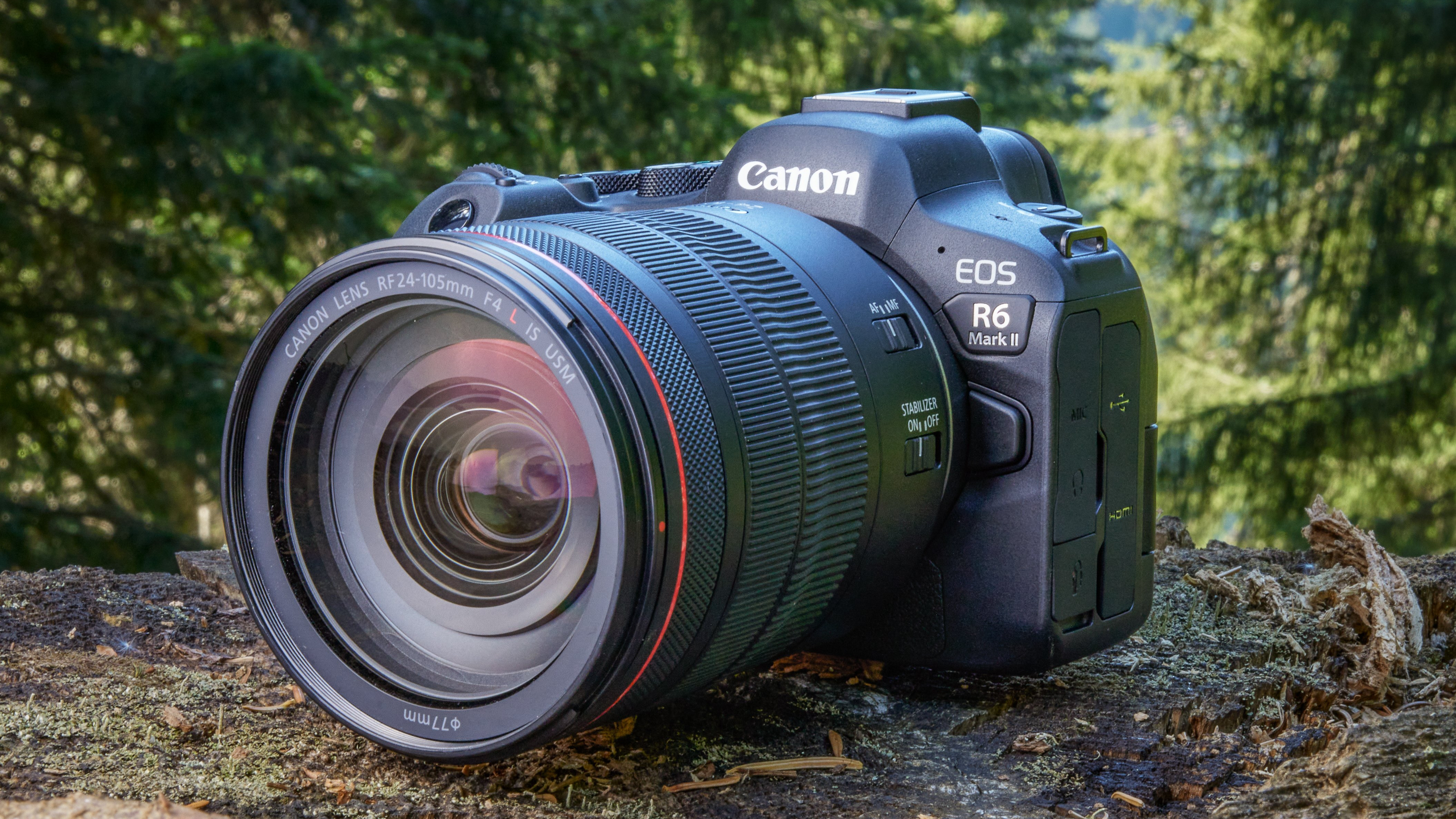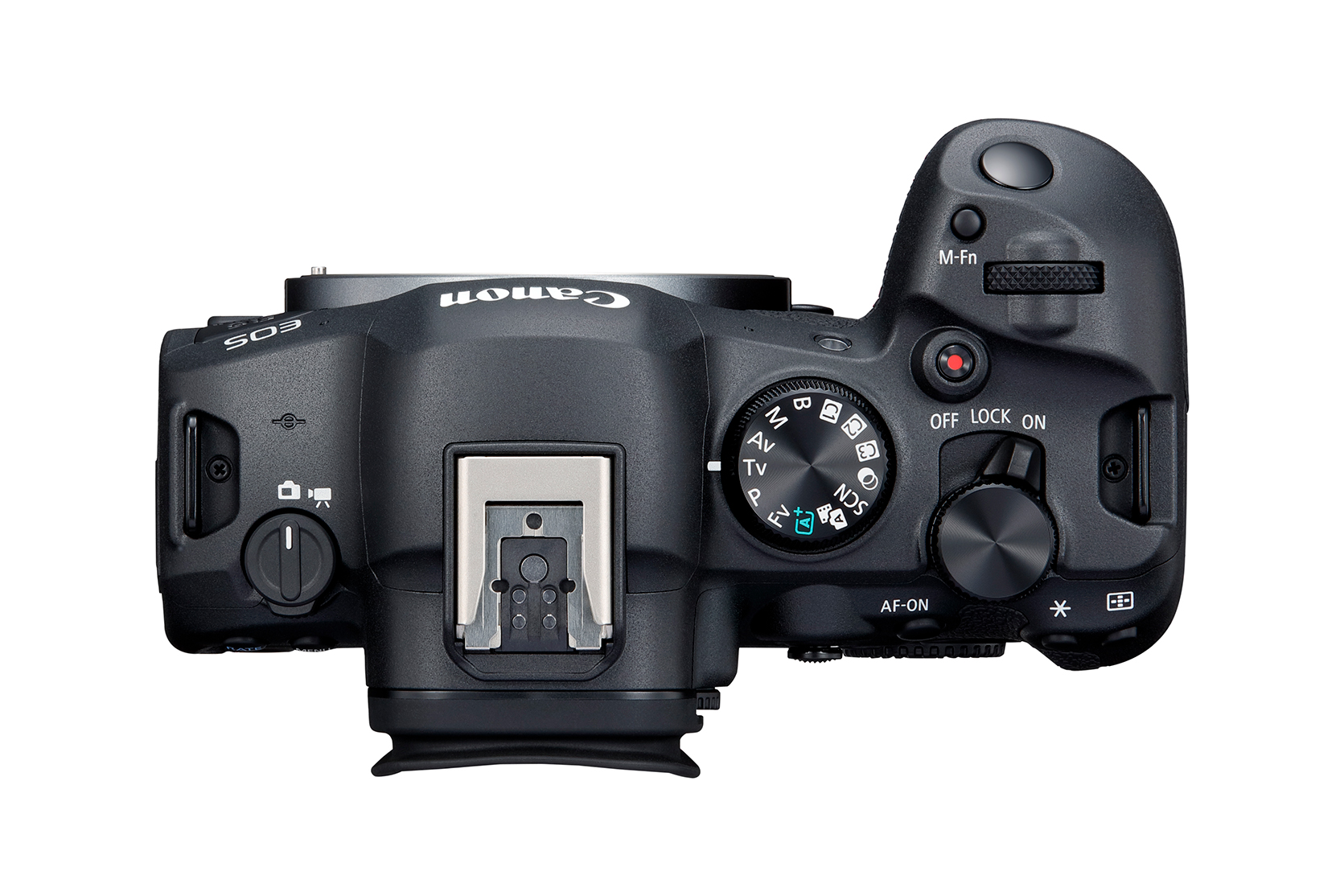Canon's fastest camera ever! The Canon EOS R6 Mark II is here
The R6 Mark II shoots at 40fps, has a new 24.2MP sensor, new AF tracking modes, and oversampled 6K video

Canon has launched the new EOS R6 Mark II full-frame mirrorless camera, and it’s packed with some sporty improvements, aiming to become a world beater in the ‘smaller fast camera’ class.
The Canon EOS R6 Mark II shoots twice as fast as the original EOS R6 (which is now discontinued in favor of the new model), and could well now be the best camera in the world for sports and wildlife photography enthusiasts.
• Check out our Canon EOS R6 Mark II review
However, you’d be forgiven for thinking surely the Canon EOS R6 can’t be redundant so soon? It doesn't feel like it, but the original R6 was actually first released over two years ago, way back in July 2020; it feels much more recent because, due to the pandemic and global supply shortages, we didn’t get to see the R6 in circulation properly until well into 2021.

The Canon EOS R6 Mark II’s headlines are a new 24.2MP CMOS full-frame sensor, compared to the EOS R6’s 20.1MP, and it’s also now Canon’s fastest EOS camera to date – it can shoot continuously at up to 40fps with the electronic shutter.
That’s double the fastest 20fps rate on the R6 and Canon EOS R5, and faster than its big brother Canon EOS R3 and little brother Canon EOS R7, that both max out at 30fps. The R6 Mark II also offers 20fps and 5fps options with the electronic shutter, or up to 12fps with the mechanical shutter.
Furthermore, compared to the EOS R6, the new sensor reduces rolling shutter problems, enabling the camera’s electronic shutter to be used to freeze fast-moving objects. This improvement is crucial for the success of the electronic shutter tech, so you can capture a fast-flying bird's wings sharp, not blurred, or bowed – without resorting to the slower 12fps mechanical shutter bursts.
Get the Digital Camera World Newsletter
The best camera deals, reviews, product advice, and unmissable photography news, direct to your inbox!
It has the same Digic X processor technology that's at the core of the EOS R5, EOS R6 and flagship Canon EOS-1D X Mark III – along with the next-generation Dual Pixel CMOS AF II to help push speed and reliability to new levels.

More advanced AF tracking
The Canon EOS R6 Mark II also gets some special improvements over the EOS R3, R5, R6, and R7 when it comes to AF technology to track more subjects and keep them sharp as they move through a scene.
Using improved Deep Learning artificial intelligence, it recognizes people, vehicles, and animals as its predecessors – but in vehicle AF detection mode, this now includes aircraft and trains in addition to cars and motorbikes, while the animal AF detection mode has been updated to recognize horses and zebras as well as dogs, cats, and birds.
With advanced eye tracking, you also can specify which eye (left or right) should be given focus priority, and when the subject’s eyes can’t be detected, the R6 Mark II focuses on the face in the frame instead. Even if a person turns away for a moment, their head continues to be tracked, and if the head isn’t visible, the camera will go on to track the body.
The R6 Mark II can record action before you start shooting, with 0.5-second pre-shooting in RAW Burst mode – a great advantage when shooting unpredictable subjects, from tennis players to toddlers.
The RAW Burst mode shoots continuously at 30fps for up to 191 frames, recording every image in a single CR3 file, all with AF tracking. Individual images can be extracted from this roll using Canon’s Digital Photo Professional software, or in camera, and saved as individual JPEG, HEIF or RAW files.
At 40fps rapid-fire rates, RAW Burst mode, and best-in-class AF subject tracking options, you’ve got a better chance than ever to capture that super-fast race car at the track, or quick-moving rabbit in the wild.
The EOS R6 Mark II boasts the world’s most effective stabilization performance, with up to 8-stops coordinated control image stabilization. You can also still focus in very low light conditions, as low as -6.5EV, and the ability to shoot up to ISO102,400.

High-quality, longer video
The EOS R6 Mark II is the only camera in its class that can use the full width of the sensor to shoot 4K 60p UHD, with simultaneous Dual Pixel CMOS AF II focusing and all the subject tracking options.
The EOS R6 Mark II has an improved circuit design for longer recording times before overheating; over 40 minutes of oversampled 4K 60p recording or up to 6 hours at 4k 30p – depending on ambient temperature, memory card space and battery life.
Better handling
The high-resolution 3.69 million-dot electronic viewfinder offers a clearer view when taking photos or video as it refreshes at 120fps. The EOS R6 Mark II has also inherited the Optical View Finder view assist feature from the professional R3, providing a natural-looking display with shadow and highlight detail, and visibility in dark areas.
Dust and weather sealing on all external doors and inputs make the EOS R6 Mark II a robust body. You also can now quickly switch between photo and movie modes with a new dedicated lever, and the EOS R6 Mark II also comes with dual SD memory card slots, like on the R6.
The Multi Function Shoe enhances communication with compatible accessories such as the new Canon Speedlite EL-5 and Directional Stereo Microphone DM E1D.
Other new feature highlights include a new HDR mode for moving subjects, a new Panoramic Photo mode where the panning direction can be set horizontally or vertically for high-rise buildings, plus you can effectively suppress the flicker in photos and videos often caused by LED lights using the Anti-Flicker mode.
The EOS R6 Mark II can be used as a webcam on PC and Macs with video-call apps such as Skype, Zoom and Teams, without having to install additional software.
The Canon EOS R6 Mark II goes on sale 29 November – and is set to cost $3,599 /£2,779.99 / AU$4,499 body only.
Read more:
Canon EOS R6 Mark II review
Canon EOS R5 review
Canon EOS R6 review
Best Canon cameras
The editor of PhotoPlus: The Canon Magazine, Peter 14 years of experience as both a journalist and professional photographer. He is a hands-on photographer with a passion and expertise for sharing his practical shooting skills. Equally adept at turning his hand to portraits, landscape, sports and wildlife, he has a fantastic knowledge of camera technique and principles. As you'd expect of the editor of a Canon publication, Peter is a devout Canon user and can often be found reeling off shots with his EOS 5D Mark IV DSLR.

